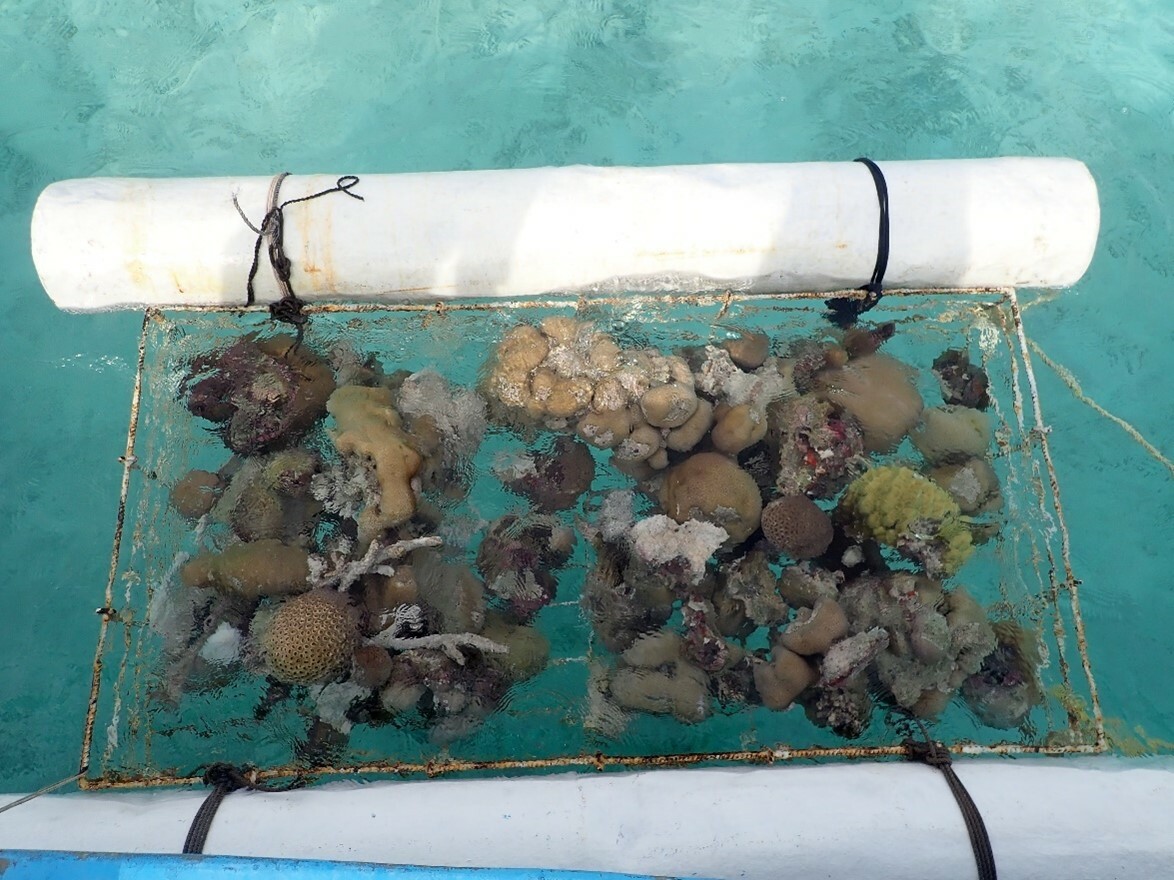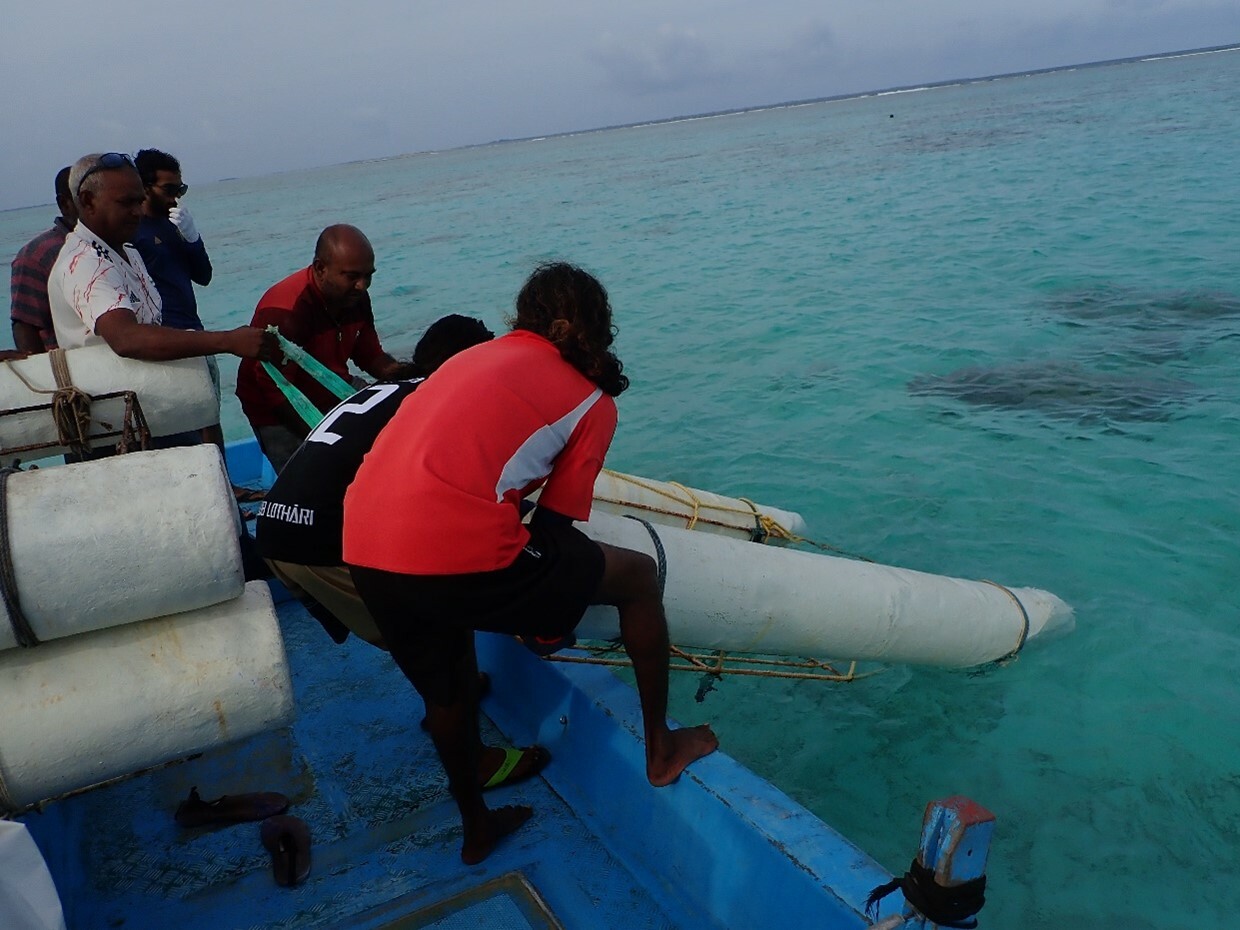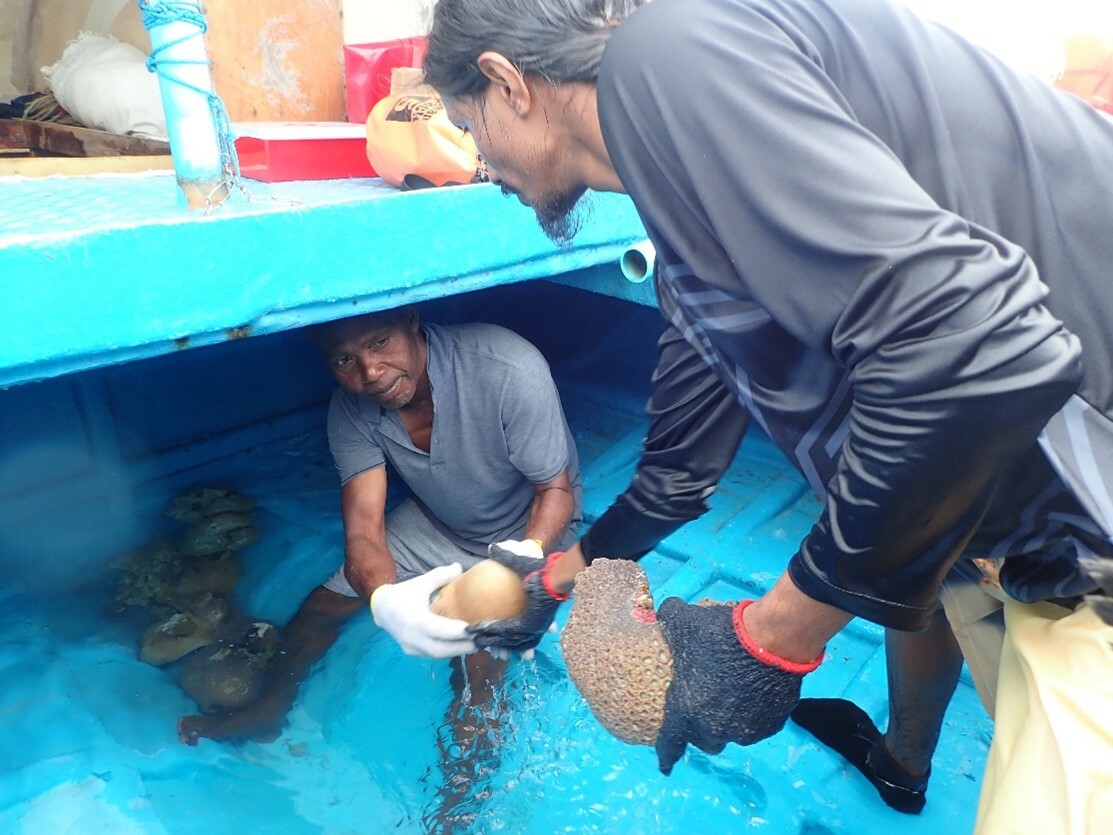Corals are present in the areas to be reclaimed for the Project. To mitigate the impact on the reef ecosystem, it is proposed in the EIA to relocate as many corals as possible from the proposed reclamation areas.
Marine consultancy companies with experience in coral restoration have been hired to perform the marine ecology surveys and the coral relocation activities.
A marine ecology pre-survey was performed in July 2022 to determine the number and the type of healthy corals present in the reclamation footprints and within 200m distance around them.
Based on the result of the pre-survey, the feasibility for coral harvesting at the donor sites and the suitability of the recipient sites for coral relocation have been assessed.
The coral relocation began in January 2023 and will continue until beginning of April 2023.
Donor corals are being sourced from the construction footprint areas. These corals are detached using hand tools such as hammer and chisel. Donor corals are selected such that it is representative of the number and type of species that are present at each donor site.
The detached corals are then safely transported to nearby selected recipient sites. Corals are kept wet throughout transportation since they are sensitive to being exposed for long times to air (especially in hot and windy weathers) and freshwater such as rain.

Transporting collected coral colonies to recipient sites
At the recipient site these corals are carefully outplaced. The type of outplacement depends largely on the size, growth form, coral species and type of substrate available at the recipient site. Three types of outplacement are being used on the Project: 1) fragile coral species are attached to coral frames 2) medium sized corals are placed reef loose if there is substrate available and the corals are of sufficient size and 3) small/medium sized corals are fixed to the substrate using underwater cement mixture.

Outplacement of corals on frames
After the relocation of the corals, a representative sub-set of the recipient sites will be monitored at three different times. The anticipated timeline for the monitoring is just after relocation, three to four months after relocation and six to eight months after relocation. This monitoring will provide more information on the success rates of the coral relocation.
For more information on coral relocation at specific donor sites please read more here.

